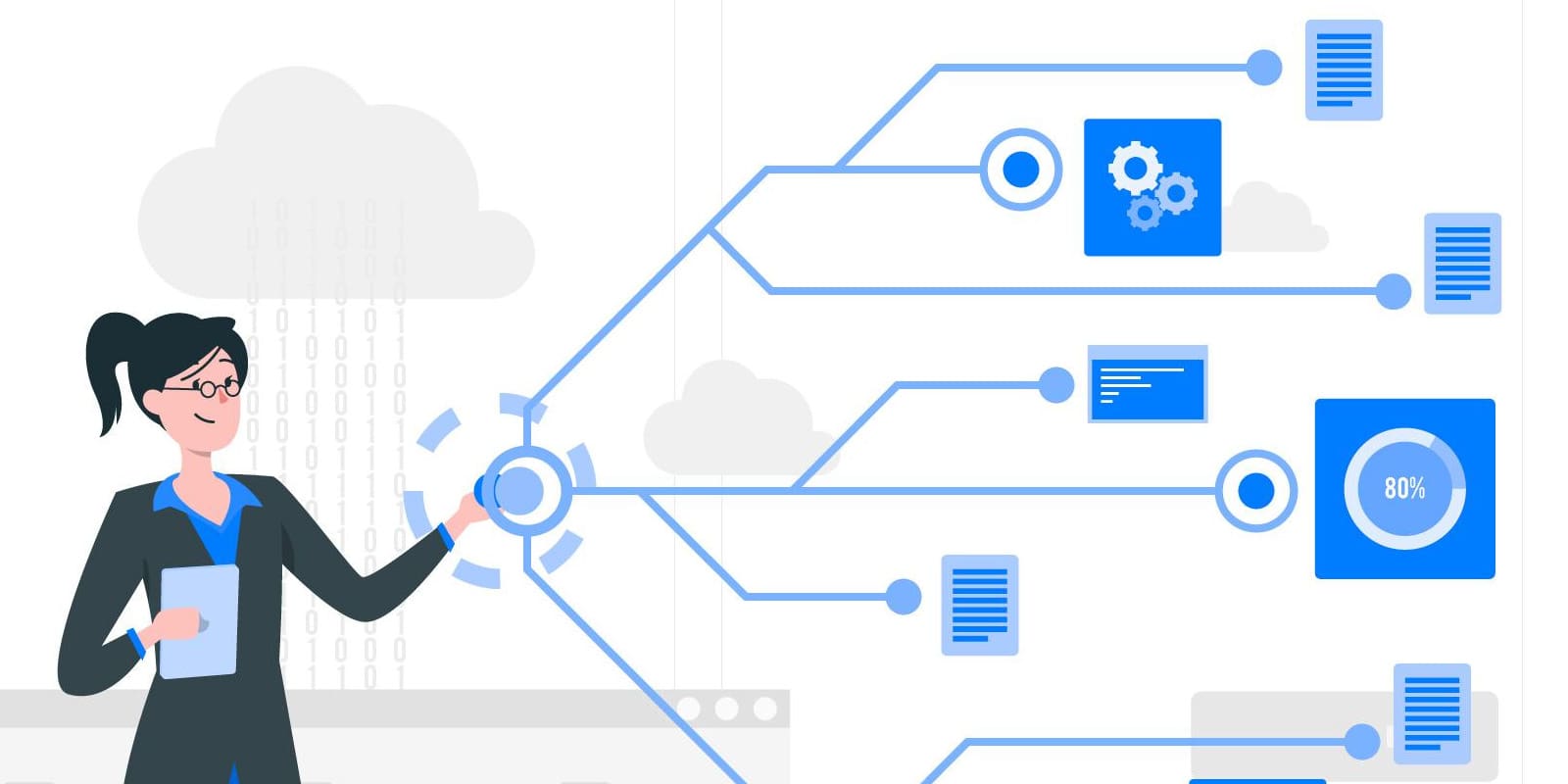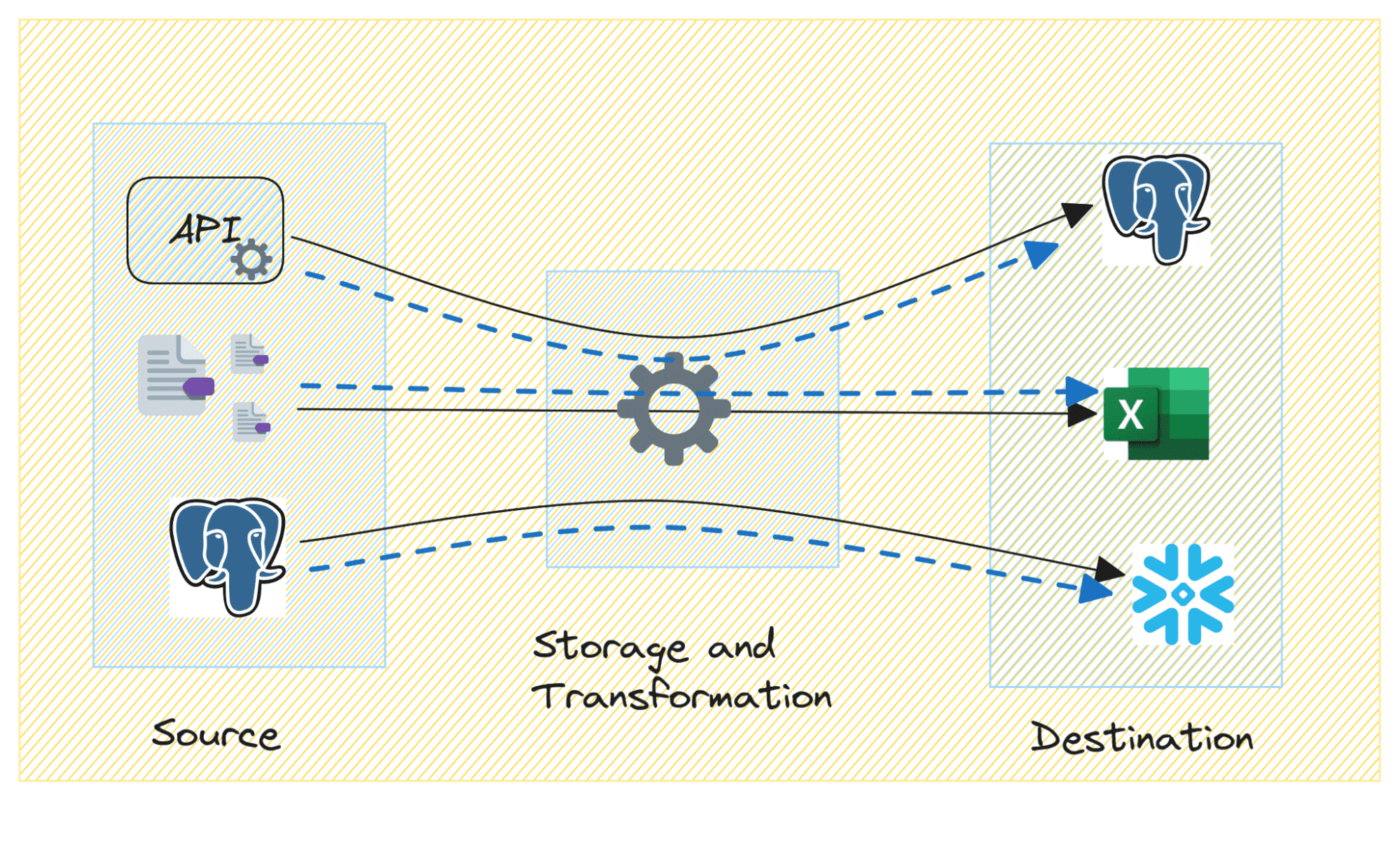
Image by set of stories on Freepik
In any data process, data ingested from sources typically goes through several transformations, to the point that data consumed from the target is very different from the data actually ingested from the source. Data lineage provides a comprehensive way to trace the flow of data through the system (from source to destination) as it undergoes transformations.
In this article, we will learn about data lineage and its importance. We'll also look at how data lineage facilitates better data management and go over some of the tools and platforms you can use for data lineage.
Let us begin!
Data lineage refers to tracking and visualizing the flow and transformation of data as it progresses through various stages in a system or data pipeline. It provides a detailed understanding of the origin, movement and transformation of data within the organization's data channels, allowing data professionals to trace the path of data from its source to its destination.
This comprehensive understanding of the data lifecycle is useful for organizations looking to improve data quality, ensure regulatory compliance, and more.
Key Components of Data Lineage
Now let's explore the key components we consider in data lineage:


Image by author
- Source systems: This component focuses on the initial source of data. Such as databases, log files, sensors, applications and other external sources.
- Metadata: Capturing metadata associated with the data is important as it includes details about the data types, formats, and any business rules or restrictions applied to the data.
- Data movement and transformation: Tracing ETL processes helps in understanding how data is extracted from source systems, undergoes various transformations, and loaded into target systems.
- Destinations: Data lineage should also track the various intermediate and final destinations of the data, including databases, data warehouses, data lakes, and the like. It also includes other storage systems involved in processing and storing information. The final destination is generally where the processed data is stored for analysis or reporting.
In essence, Data lineage provides a clear, holistic view of data flow, helping organizations understand dependencies and relationships.. Because data lineage provides more than just a snapshot of data flow, it enables organizations to make informed decisions about data management and utilization.
Now that we know what data lineage is, let's move on to learn more about how and why it is important.
Data quality and integrity
Data lineage helps maintain data quality by providing a transparent view of the data journey. This transparency ensures that data remains accurate, reliable, and aligned with business objectives.
Additionally, data lineage also helps mitigate data quality issues through lineage tracing. By tracking the flow of data (and its associated metadata), organizations can quickly identify and address data quality issues.
Normative compliance
Data lineage helps organizations meet regulatory requirements by providing a complete record of data movement, transformations, and storage. With clear visibility of the data journey from source to destination along with transformations, data lineage acts as a robust mechanism to ensure compliance with legal and industry-specific regulations.
Troubleshooting and debugging
Data lineage also helps identify and resolve data issues efficiently. Simplifies the troubleshooting process by providing guidance to identify points of failure or inconsistencies. This accelerates resolution of data-related issues, minimizing downtime and operational disruptions.
Data lineage also facilitates easier governance and greater overall efficiency, among other benefits.
Impact analysis
Data lineage is useful in impact analysis by providing a clear view of how changes to data sources, structures, or processes will affect the overall system. This understanding is very useful before implementing any modification to avoid unintended consequences.
Data lineage also plays a role in informed decision making and risk management: with a comprehensive understanding of how data is transformed and consumed, decision makers can make informed decisions about changes, updates or deployments. This also ensures that potential risks are identified and mitigated before they can negatively impact the organization.
Audit and Governance
Data governance is based on transparency and accountability. Data lineage serves as a critical tool for enforcing governance policies, ensuring data is handled in accordance with established standards, security protocols, and compliance requirements.
During audits, regulators and internal auditors often seek information about data handling practices. Data lineage provides a detailed record of data movement, transformations, and storage, facilitating seamless audits and demonstrating compliance with regulatory requirements.
More efficient operation
By visualizing data flow, organizations can identify redundant processes, bottlenecks, or inefficiencies in their data workflows. Therefore, data lineage helps eliminate unnecessary steps and optimizes the overall efficiency of data management.
Because data lineage provides a complete but better understanding of the data flow: from data extraction to consumption, it also guides workflow optimizations to reduce processing times, optimize resource utilization, and more.
In short, the applications of data lineage extend beyond its role as a tracking mechanism. It serves as a strategic tool for organizations to evaluate the impact of changes, maintain governance standards, and optimize operational efficiency.
As you may have guessed, data lineage can benefit from some level of automation. Because automated tools can continually monitor data movement and transformations, providing real-time updates to data lineage, it is ensured that information is always up-to-date and reflects the latest changes.
Some notable tools in the data lineage space include:
- cockroaches: Includes robust data lineage capabilities to visualize and understand the end-to-end data journey.
- Axon Computing: As part of the Informatica platform, Axon provides data governance and metadata management.
- IBM InfoSphere Information Governance Catalog– A tool for managing metadata and providing end-to-end data lineage tracking within complex enterprise environments.
- Apache Atlas– An open source tool that offers comprehensive data lineage and metadata management capabilities, commonly used in big data ecosystems.
- Erwin Data Intelligence (DI): Provides a comprehensive view of data assets, including data lineage, to support data governance and compliance efforts.
In this article, we review data lineage and its importance in ensuring data quality, compliance requirements, and more. Additionally, we discuss how data lineage tracking can help with impact analysis and optimizing system efficiency.
Finally, we look at some tools you can use to trace data lineage. I hope you found this article helpful!
Bala Priya C. is a developer and technical writer from India. He enjoys working at the intersection of mathematics, programming, data science, and content creation. His areas of interest and expertise include DevOps, data science, and natural language processing. He likes to read, write, code and drink coffee! Currently, he is working to learn and share his knowledge with the developer community by creating tutorials, how-to guides, opinion pieces, and more.
 NEWSLETTER
NEWSLETTER





